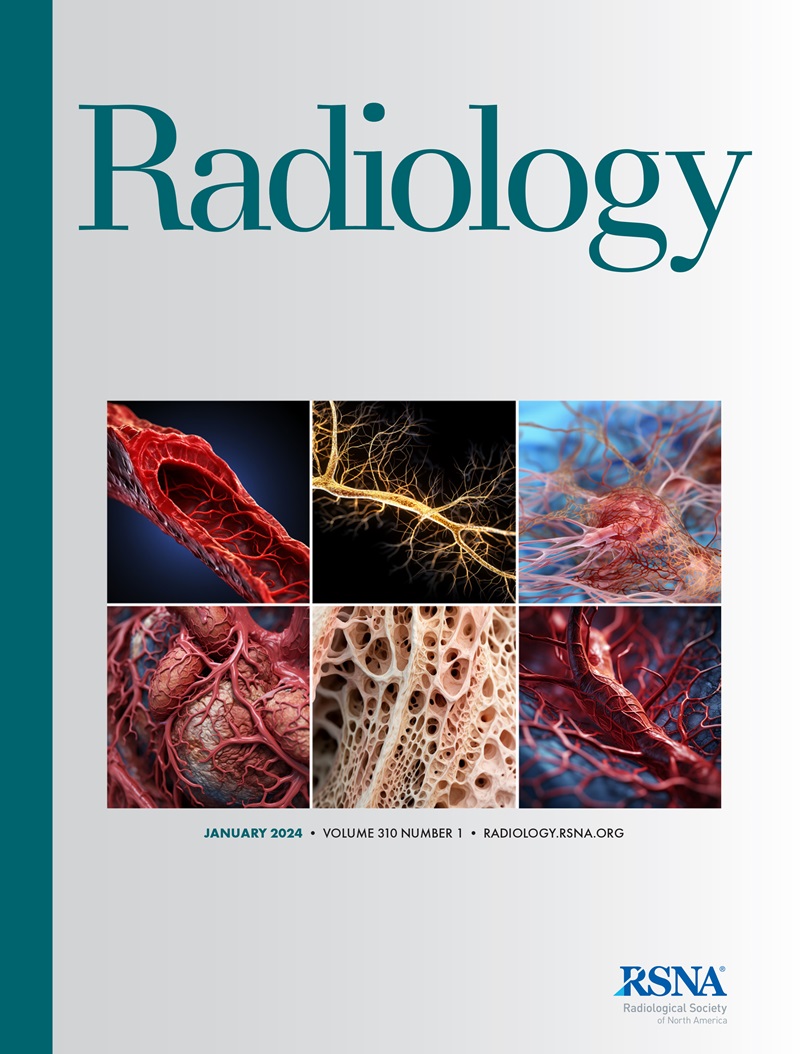Young Joon Lee, Hyong Woo Moon, Moon Hyung Choi, Seung Eun Jung, Yong Hyun Park, Ji Youl Lee, Dong Hwan Kim, Sung Eun Rha, Sang Hoon Kim, Kyu Won Lee, Yeong-Jin Choi, Young Sub Lee, Woojoo Lee, Seungjae Lee, Robert Grimm, Heinrich von Busch, Dongyeob Han, Bin Lou, Ali Kamen
求助PDF
{"title":"MRI-based Deep Learning Algorithm for Assisting Clinically Significant Prostate Cancer Detection: A Bicenter Prospective Study.","authors":"Young Joon Lee, Hyong Woo Moon, Moon Hyung Choi, Seung Eun Jung, Yong Hyun Park, Ji Youl Lee, Dong Hwan Kim, Sung Eun Rha, Sang Hoon Kim, Kyu Won Lee, Yeong-Jin Choi, Young Sub Lee, Woojoo Lee, Seungjae Lee, Robert Grimm, Heinrich von Busch, Dongyeob Han, Bin Lou, Ali Kamen","doi":"10.1148/radiol.232788","DOIUrl":null,"url":null,"abstract":"<p><p>Background Although artificial intelligence is actively being developed for prostate MRI, few studies have prospectively validated these tools. Purpose To compare the diagnostic performance of a commercial deep learning algorithm (DLA) and radiologists' clinical reports for cancer detection in participants from two hospitals using histopathologic findings from biopsy specimens as the reference standard. Materials and Methods This prospective bicenter study enrolled participants suspected of having prostate cancer (PCa) who were scheduled for biopsy based on clinical information, including prostate MRI, from December 2022 to July 2023. Targeted prostate biopsies were performed for lesions with Prostate Imaging Reporting and Data System (PI-RADS) scores of 3 or higher, identified by either radiologists or the DLA. PI-RADS classifications by radiologists (using all imaging sequences), the DLA (using biparametric MRI), and the scenario in which radiologist-based PI-RADS 3 scores were modulated with DLA-based PI-RADS scores were compared using the area under the receiver operating characteristic curve (AUC) with DeLong and McNemar tests. Results A total of 259 lesions, including 117 clinically significant PCas (csPCas) (Gleason grade group ≥2), were evaluated in 205 men (median age, 68 years; age range, 47-90 years). At per-lesion analysis, the DLA had a lower sensitivity (94 of 117; 80%) and higher positive predictive value (PPV) (94 of 163; 58%) for detecting csPCa than did the radiologists (109 of 117 [93%] and 109 of 227 [48%]; <i>P</i> = .02 and <i>P</i> = .008, respectively). At per-participant analysis, incorporation of the DLA increased specificity from 23 of 108 (21%) to 48 of 108 (44%) (<i>P</i> = .001), with similar sensitivity (96 of 97 [99%] vs 93 of 97 [96%]; <i>P</i> = .74). There was no evidence of a difference in the AUC between radiologist-based and DLA-based PI-RADS score (0.77 [95% CI: 0.70, 0.82] vs 0.79 [95% CI: 0.73, 0.85]; <i>P</i> = .73). Conclusion The DLA demonstrated lower sensitivity but a greater PPV than radiologists for detecting csPCa in a biopsy setting. Using DLA results when radiologists' interpretations are indeterminate could improve specificity while maintaining sensitivity. International Clinical Trials Registry Platform registration no. KCT0006947 © RSNA, 2025 <i>Supplemental material is available for this article</i>.</p>","PeriodicalId":20896,"journal":{"name":"Radiology","volume":"314 3","pages":"e232788"},"PeriodicalIF":12.1000,"publicationDate":"2025-03-01","publicationTypes":"Journal Article","fieldsOfStudy":null,"isOpenAccess":false,"openAccessPdf":"","citationCount":"0","resultStr":null,"platform":"Semanticscholar","paperid":null,"PeriodicalName":"Radiology","FirstCategoryId":"3","ListUrlMain":"https://doi.org/10.1148/radiol.232788","RegionNum":1,"RegionCategory":"医学","ArticlePicture":[],"TitleCN":null,"AbstractTextCN":null,"PMCID":null,"EPubDate":"","PubModel":"","JCR":"Q1","JCRName":"RADIOLOGY, NUCLEAR MEDICINE & MEDICAL IMAGING","Score":null,"Total":0}
引用次数: 0
引用
批量引用
Abstract
Background Although artificial intelligence is actively being developed for prostate MRI, few studies have prospectively validated these tools. Purpose To compare the diagnostic performance of a commercial deep learning algorithm (DLA) and radiologists' clinical reports for cancer detection in participants from two hospitals using histopathologic findings from biopsy specimens as the reference standard. Materials and Methods This prospective bicenter study enrolled participants suspected of having prostate cancer (PCa) who were scheduled for biopsy based on clinical information, including prostate MRI, from December 2022 to July 2023. Targeted prostate biopsies were performed for lesions with Prostate Imaging Reporting and Data System (PI-RADS) scores of 3 or higher, identified by either radiologists or the DLA. PI-RADS classifications by radiologists (using all imaging sequences), the DLA (using biparametric MRI), and the scenario in which radiologist-based PI-RADS 3 scores were modulated with DLA-based PI-RADS scores were compared using the area under the receiver operating characteristic curve (AUC) with DeLong and McNemar tests. Results A total of 259 lesions, including 117 clinically significant PCas (csPCas) (Gleason grade group ≥2), were evaluated in 205 men (median age, 68 years; age range, 47-90 years). At per-lesion analysis, the DLA had a lower sensitivity (94 of 117; 80%) and higher positive predictive value (PPV) (94 of 163; 58%) for detecting csPCa than did the radiologists (109 of 117 [93%] and 109 of 227 [48%]; P = .02 and P = .008, respectively). At per-participant analysis, incorporation of the DLA increased specificity from 23 of 108 (21%) to 48 of 108 (44%) (P = .001), with similar sensitivity (96 of 97 [99%] vs 93 of 97 [96%]; P = .74). There was no evidence of a difference in the AUC between radiologist-based and DLA-based PI-RADS score (0.77 [95% CI: 0.70, 0.82] vs 0.79 [95% CI: 0.73, 0.85]; P = .73). Conclusion The DLA demonstrated lower sensitivity but a greater PPV than radiologists for detecting csPCa in a biopsy setting. Using DLA results when radiologists' interpretations are indeterminate could improve specificity while maintaining sensitivity. International Clinical Trials Registry Platform registration no. KCT0006947 © RSNA, 2025 Supplemental material is available for this article .

 求助内容:
求助内容: 应助结果提醒方式:
应助结果提醒方式:


